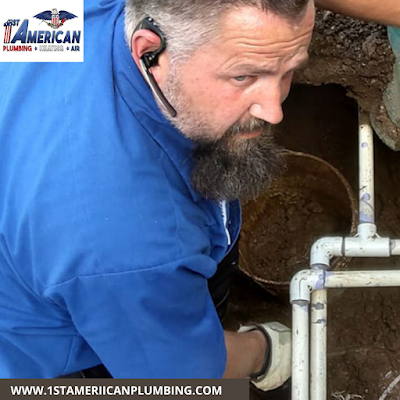From Dripping Faucets to Burst Pipes: Understanding the Types of Water Damage and Their Impact
Leaky faucets, overflowing toilets, and burst pipes can all lead to water damage, serious problems that can cause structural damage, mold growth, and even health issues. Understanding the different types of water damage and their impact can help you identify issues early and take steps to minimize the damage to your property. However, if things are beyond your control, professional plumbers can take care of the water damage restoration.
Different Forms of Water Damage
Slow Leaks
Slow leaks often go unnoticed for a long time. While the initial damage might seem insignificant, these leaks can lead to -
- Mold: Mold thrives in damp environments, and even small leaks can create the perfect conditions for mold spores to flourish. Mold can cause respiratory problems, skin irritation, and other health issues.
- Structural Damage: Even a slow leak over time can cause significant damage to walls, floors, and ceilings - wood can rot, drywall can crumble, and paint can peel.
- Increased Water Bills: Those unnoticed drips can lead to an increased water bill.
Sudden Bursts
Burst pipes, often caused by freezing temperatures or high water pressure, are plumbing emergencies that require immediate attention. The sudden release of a large amount of water can cause extensive damage in a short period, including:
- Flooding: Burst pipes can flood entire rooms or even floors, causing severe damage to furniture, electronics, and personal belongings.
- Structural Damage: The force of rushing water can damage walls and floors and weaken the home's foundation.
- Electrical Hazards: Water can damage electrical wiring, creating a safety risk.
Prevention and Restoration
The best way to deal with water damage is to prevent it in the first place. Here are some tips -
- Regularly inspect your plumbing system for leaks and signs of wear and tear.
- Insulate exposed pipes in areas prone to freezing temperatures.
- Install a pressure relief valve on your water heater to prevent excessive pressure buildup.
- Address slow leaks promptly.
- Invest in a water leak detector, which can alert you to even small leaks before they cause major damage.
- Have your plumbing system inspected by a professional plumber regularly, especially if your home is older.
If you suspect water damage in your home, act promptly - turn off the water supply to the affected area and contact a professional plumber for water damage restoration services. These specialists can assess the damage, remove standing water, dry the affected area, and prevent mold growth.
Severe Water Damage is Preventable
By taking the steps discussed here, you can help ensure that your home is safe from the damaging effects of water. Whenever you face severe water damage, the 1st American Plumbing, Heating, and Air team is ready to perform services for Water Damage Restoration in South Jordan. With several years of experience and unmatched customer trust, 1st American knows when there is a leak and how it has to be handled. So, visit our website to schedule an appointment to fix any leakage issues or inspect your property to ensure none.
The Article "From Dripping Faucets to Burst Pipes: Understanding the Types of Water Damage and Their Impact" Was Originally Posted Here.
.jpg)



Comments
Post a Comment